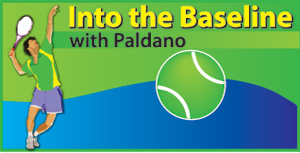Player’s survival
View(s):The origin of sporting event happened 3000 years ago – the first Olympics. It was an era, when a reason was necessary for an event. Olympics is the festival in honour of Greek god Zeus. Ancient games did not survive. In 1896, Olympics revived 1503 years later. Why its revival? The answer will shed some light into reasons of modern sporting events.
Coroebos the Cook – first Olympian
Today nations bid to stage Olympics. Rights to host a major event is ‘competitive’. Many including me will find this notion strange. The reason is sporting event are economy boosters. Money and prestige are the reasons for a nation to host Olympics.
Coroebos the cook would have enjoyed prestige and position in his native town winning the first Olympic gold medal for 600 metres foot-race in the ‘stades’ of Elis, a city then was already 500 years old in 776 BC. Stades is the stadium of today. Today, there is one addition to Coroebos’s gain, money! Unlike Coroebos the cook, today’s athletes work only to indulge in one of the 100 plus Olympic disciplines, nothing else.
Club’s little stadium
In Sri Lanka, tennis clubs are the playing facility provider to members. A monthly/annual subscription levying for its sustenance. To perpetuate their existence, they have an annual event. The club championships is their tennis festival. Clubs in local government precincts subjected to rate increase on their prime city premises. The annual club championship is to exhibit their activeness and to earn extra cash. Membership of clubs expensive. The players use their events to gain national ranking points and for prominence. These players are the present-day would-be Coroebos, the Greek cook. I find this appealing.
Player competition survival
These three words do not give an easy understanding to anyone. Unlike the past today there is no recognition of a player until their names appear in one of the accepted global ranking. It exists for adults as ‘Open’ and ‘Juniors’. Tennis Open Ranking has come under the control of the professional bodies, WTA and ATP. To get there, players must transcend ranking of their own country and that of ITF, World Junior Ranking. Here lies some difficult obstacles and high expenses especially to those from small countries.
Tactical fitness
In tennis-countries, coaching has become big event and in most do not work towards high performance but for numbers, in money and players. An approach that can produce stroke makers and not tactically smart physical strong players. Often I see players start a match with stroke making skills and speed that they cannot sustain only mere eight to 10 games. Then players challenge vittles down to a nothing. In one of the finals in the recent Colombo event, after eight games tactical play ceased and mere ball over the net won. The opponent having led could not take the strain after nine games. With this type of development, WTA and ATP rankings will be out of bound for us. Coaches’ better wake up to this fact soon.
 Any tactic chosen by the player must have matching physical abilities. In tennis, speed, stamina and strength are required for 36 games as the minimum. Players execute up to 3000 shots in a close encounter. Often better stroke maker loses and physically fitter player wins. Strong physical presence in a player is tactical.
Any tactic chosen by the player must have matching physical abilities. In tennis, speed, stamina and strength are required for 36 games as the minimum. Players execute up to 3000 shots in a close encounter. Often better stroke maker loses and physically fitter player wins. Strong physical presence in a player is tactical.
Many countries are trying to streamline the progress system in junior development. Our junior tennis interests and programme are in the volts of ITF. We are affiliated to them and they use as a service provider effectively than player development outfit. This is not the purpose of our affiliation to a world body. Now we have more tennis coaches than players. Our road should lead to WTA and ATP.
For juniors, if our local ‘situation’ does not provide effective coaching and competition path our juniors will face the worst at 17 years of age. There is a very big gaping gap between local tennis standard and the global professional standard. Venturing very early into qualification of WTA and ATP events is turning out to be most fruitful junior path for success. For many this path is not open due to poor playing ability. Many know this and very little done and available to correct this.
The year 2022
Big names are back again. Globally and locally in many countries events are being stages again, that is the good news. To circumvent Covid-19 events use the ‘bubble’. It not spectator friendly. Our precautionary habits have taken us into the winning side in the battle against the virus. ATP and WAT had events in Australia as planned.
In the WTA field Keys, Collins and Stevens from the USA proved formidable in Australia Open. The known brigade Halep, Cristea, Sakkari of Greece, new names Badosa, Jabeur of Tunisia, Swiatek and the rest did assemble for the Australian Open and made it memorable.
In men’s Canadian Ali Assime is the man to watch. He beat a seasoned New-Gen player Tsitsipas recently with ease and had match point against mighty Nadal in Australia Open. His early rounds in Australia Open tired him and Nadal in the semi-final had the best but a difficult antidote to fix that. He administered it well to gain his 21st Grand Slam title.
In February, events in Europe and South America being staged. To players travel and spectator bubble are irksome. Quarantine cause extra expenditure and disturb training routines.
–George Paldano, European and Asian competition player; Accredited Coach of German Tennis Federation; National coach Brunei and
Sri Lanka; Davis Cup, Federation Cup; coached top 200 ATP, WTA and ITF Top 50. 0775448880–


